10. In-Vehicle Rear-Flushing Spittoon
Inventor: Dan L. Fain (U.S.)
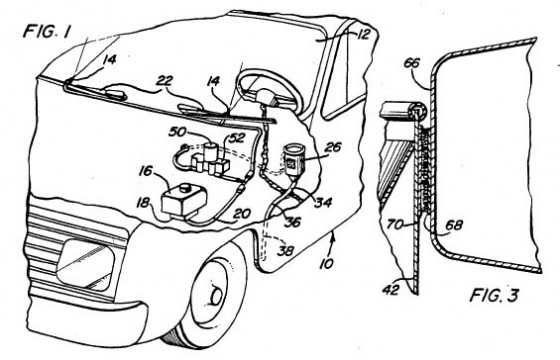
Practical as this may sound, not as many people chew tobacco or spit snot out of their car windows as you may guess. Fain’s imaginative idea of hooking up a spittoon to the windshield washer fluid motor may have sounded like an award-winner to the Copenhagen Man, but to just about everyone else in the United States it made little, if any, sense. How often does the average human being have to spit out of his or her vehicle? Granted, there are obvious exceptions to this rule, but there are also so few exceptions that this invention never really, how should we say it… took off.
Unfortunately for Mr. Fain, the price tag on his invention was just a little too high for its inherent value. Yes, even for the Copenhagen Man. We advise that you simply roll down the window or open the door at a light. Or, if you’re an avid chewer or dipper, carry a Styrofoam cup. It’s easier than you think. Image: freepatentsonline.com
9. “Small Sacrifices” Glider
Inventor: Otto Lilienthal (Germany)
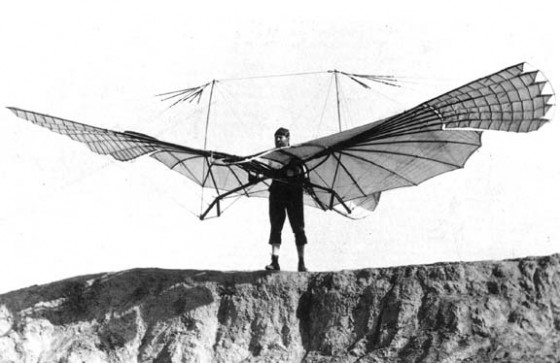
Aptly nicknamed “the Glider King” by some of his peers and fans, inventor Otto Lilienthal if famous for developing and testing numerous gliders and other attempted flying devices. Lilienthal moved to Austria in his early years in order to try out his various glider designs on the Alps. After being interrupted by the Franco-Prussian War, in which he served voluntarily, Lilienthal returned to Austria where he started a business building steam engines and continued his pursuit for the dream of flight.
His last days were spent putting the finishing touches on what would prove to be his final glider design. After taking the plunge from a 17 meter manmade hill, Lilienthal experienced unexpected technical difficulties with his craft and plummeted into the soil. He broke his spine and died in Berlin the following day. Among his last words were, “small sacrifices must be made.”
The Wright Brothers are quoted as regarding Lilienthal’s findings as highly important to the developing field of aviation.
8. Bird Trap and Cat Feeder
Inventor: Leo O. Voelker (U.S.)

While pictures of this device are disturbing at best, the invention was registered with the U.S. Patent Office and was granted permission to be patented. The device is exactly what it says it is: a bird trap that catches birds and forces them into a thin cage, through which the family cat may claw and kill (and perhaps consume) the animal.
Interesting. Disturbing. Never produced in mass quantities. Image: freepatentsonline.com
7. Razr Phone
Inventor: Motorola (U.S.)
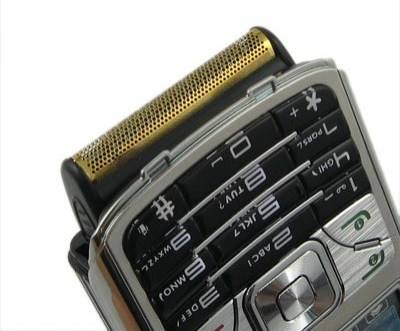
Despite it’s name, Motorola’s Razr cell phone (also known as the MotoRazr) did not, well, shave. At all. Somehow, between the marketing, designing, and translation projects, somebody forgot to actually use the device. Following countless reports to the company about the Razr’s consistent failure to accomplish virtually any level of neatness, the company was forced to reevaluate the product’s status on the market. Following this failure, David Beckham’s heavily endorsed product, the Rong Zun 758 Mobile Razor has taken the place of the late, great Moto Razr and is having slightly better results.
Just shave at home, boys. It’s cheaper, cleaner, and won’t eat up your cell battery.
6. Motor Powered Roller Skates
Inventor: Unknown (China)
Made in China and brought into the U.S. via Amsterdam, these skates were sold mostly on street corners and over the Internet. They were not incredibly pricey, but they were incredibly dangerous. The skates had a handheld throttle device, and would reach 20mph in under 20 seconds. Although no proper brakes were affixed to the skates, an “emergency stop” button allowed for the user to lock the wheels, almost always resulting in a horrific 20mph accident.
It’s no mystery why these babies aren’t available at your local Toys ‘R Us.
5. Passenger Seat Fuel Tank
Inventor: Kenneth E. Brock (U.S.)
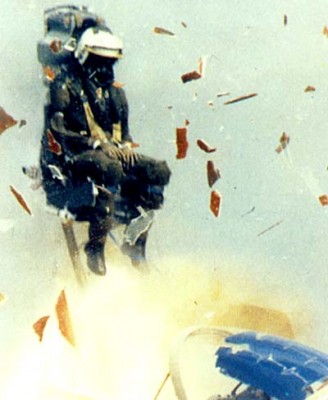
Mr. Brock, an attorney by trade, suspected that by creating a fuel tank in the shape of a passenger seat, an airplane could achieve greater flight distances. At first the invention seemed marvelous, but upon further research (allowing other people to hear his idea), he discovered that potential passengers of these “seat tank” planes were mortified that an entire canister of fuel could be in the seat in front, behind, or beneath them. With no shield to guard against explosion or leakage into the main compartment of the aircraft, the idea was eventually disbanded and left for others to pursue a more stable and logical means of increasing the range of civilian aircraft.
It appears that Brock, following the EAA’s lack of interest in endorsing the design, attempted to create a passenger seat fuel tank for use in sports cars and other vehicles. Not surprisingly, the potential passengers in these vehicles had the same response. “What happens if we get into an accident? Won’t the tank explode all over me?” Brock had little success in answering this question, and his 1971 Passenger Seat Fuel Tank mission fizzled out into a failed dream.
4. Smile Scanner
Inventor: Keihin Electric Express Railway (Japan)

Don’t be fooled by their cheery, personable faces: the Keihin Railway workers operating their stations may be far from happy. Their bared teeth and upwardly curving dimples are mandatory and cameras and computer software designed to detect and critique the “cheerfulness” of their smiles are monitoring them.
Many folks thought that the mechanization of the human race would stop with bionic arms and legs. It is plain to see that these people spoke too soon. These newly invented machines have now infiltrated our mood zones, arresting the human freedom to display an “improper” emotion.
This is wrong on so many levels.
3. TNT
Inventor: Joseph Wilbrand (Germany)
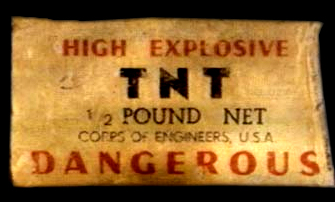
Originally intended for use as a yellow dye, Wilbrand created the first batch of trinitrotoluene (the explosive commonly known as TNT) in 1863. This seemingly innocent yellow dye sat on the table for roughly 40 years until the early 1900s, when laboratory scientists realized its efficiency as an explosive. Trinitrotoluene was researched, tested, and in action for WWI and WWII.
TNT is used for both constructive (leveling old buildings to create new ones) and deconstructive (war, terrorism) purposes. The reason for its inclusion in this list has to do with the unfortunate misconceptions of Mr. Wilbrand, who failed to realize that his yellow dye, while only mildly successful at coloring German flags, could have earned him a princely sum from the many militaries of the world who were, at the time, employing the usage of comparatively primitive explosives.
2. The “Best” Morning Sickness and Sleeping Pill (Thalidomide)
Inventor: Grunenthal Pharmaceutical Company (Germany)
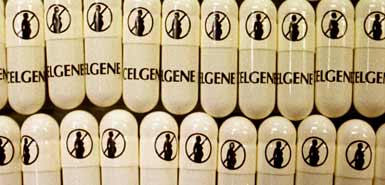
Developed as a cure for “morning sickness” in 1944, Thalidomide was rumored to be the “best” cure for insomnia, coughing fits, and headaches. The drug has since been described by many as one of the worst medical blunders in the history of the world. After being prescribed to countless pregnant women in the late 1950s, severe birth defects resulted, affecting upwards of 20,000 newborn children.
Despite its propensity to causing horrific birth defects, Thalomide is still used on primates and other furry creatures, for which it carries no negative side effects. The drug, which has held many titles and boasted many capabilities, was originally developed as an antidote to Sarin gas.
1. Chlorofluorocarbons (CFCs)
Inventor: Thomas Midgley, Jr. (U.S.)

Thomas Midgley, originally a mechanical engineer, developed the gasoline additive tetra-ethyl lead. This advancement led to the immediate production of chlorofluorocarbons, the “anti-atmosphere” molecule that threatens to wipe oxygen off the face of the Earth. At the time, his discovery was readily applauded. However, now we know that the compounds released by gasoline engines designed to turn oxygen atoms into chlorofluorocarbons may very well lead to the total depletion of the ozone layer.
It has been said that Thomas Midgley, who holds dozens of patents to his name, has adversely impacted the atmosphere more than any single organism in the history of our planet.
